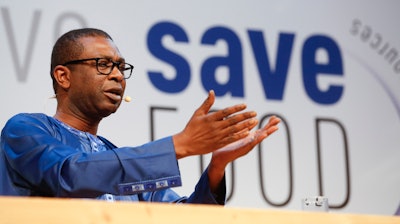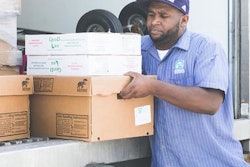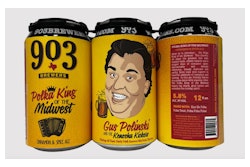
The second international SAVE FOOD Congress was successfully conducted May 7 through 8 at the recent interpack 2014 packaging trade fair in Düsseldorf, Germany. Even more than the inaugural edition three years ago, this two-day congress demonstrated methods to fight food losses and food waste along the entire value chain. High-profile guests and participants—including Food and Agriculture Organisation of the United Nations (FAO) and United Nations Environment Programme (UNEP) officials, the Senegalese minister and musician Youssou N’Dour, and former German minister Renate Künast—contributed their knowledge, while an array of lectures and workshops served to identify practical problem-solving approaches and options.
SAVE FOOD, launched at interpack 2011, is a joint initiative of FAO, UNEP, and Messe Düsseldorf GmbH against worldwide food loss and waste. SAVE FOOD seeks to network between the relevant players in business, government, and research, encourage dialogue, and help to find solutions along the food value chain. Another goal is to initiate and promote special SAVE FOOD projects with support from industry. The SAVE FOOD initiative believes that packaging technology, in particular, can make a major contribution to the elimination of the food loss and food waste problem through the development of smart solutions. Packaging World was the first official media sponsor, signing on in 2011.
At the 2014 congress, a central topic was the presentation of the recent baseline study conducted by the SAVE FOOD Initiative, which explains the causes of and concrete approaches to solve the food loss problem in Kenya through case studies looking at smallholder agricultural operations and fisheries in that country. Resulting approaches could be applied to other African markets as well, including the development of capacities along the supply chain and the targeted use of technology, as well as an increase in training opportunities for growers, the establishment of local warehouses and distribution centers, and raising awareness regarding efficiency and sustainability improvements in general. This study particularly deals with the issue of improving yields for milk, fish, and corn in Kenya.
Another project exemplifying the initiative’s targeted measures was introduced: the SAVE FOOD Mango Project in Kenya. Its central first step is the deployment of effective processing and packaging equipment in order to generate greater added value within the country and reduce mango losses. Another issue is the processing of fruit that is no longer fit for immediate consumption. In addition to the improved handling of rising domestic demand, the goal is a sharp export ratio increase. Altogether, these improvements aim to reduce losses along the supply chain by 30,000 tonnes initially.
The Innovationparc Packaging—a special exhibit as part of the interpack 2014 trade fair —presented best practices from the industry and current projects aimed at minimizing food losses both in the producing countries and on the retail and consumer level. UNEP and FAO were among those presenting comprehensive case studies in the Innovationparc Packaging exhibit, which served as the basis for specific advanced measures.
Each SAVE FOOD Congress day dealt with a specific topic. The first day focused on big-picture political and civil-society approaches, while the second day predominantly covered private-sector topics. A common theme linked both days of the congress: building and strengthening alliances and bringing together all players from the entire food value chain in an effort to use a wide range of capabilities and resources to unlock new possibilities.
At the conclusion of the second international SAVE FOOD Congress, the presenters signed a declaration about their continued collaboration for the development of innovative solutions. With this declaration, they expressed their commitment to use consistent strategies and constructive measures across the corporate, institutional, and national levels.
“The SAVE FOOD conference has clearly shown that we need to address the problem of food waste and losses at all levels of the food chain,” says FAO Assistant Director-General Ren Wang. “We simply should not continue to waste and lose food that nobody eats. This is a non-productive use of scarce resources like energy, land, and water and contributes to climate change. Governments, the private sector, and civil society need to cooperate closely to develop better policies, and affordable and sustainable technological innovations, and promote behavior change to ensure that food is being consumed in a more efficient way.”
Notes Werner M. Dornscheidt, President and CEO of Messe Düsseldorf, “I am very pleased with the second international SAVE FOOD Congress and with its outcome. Once more, it impressively demonstrated that a broad alliance reaching across sectors and across nations can make a difference and have a real impact. Our goal is and will remain a reduction of food losses and food waste along with that the eradication of hunger in the world—and this Congress has brought us a big step closer to our goal.”

























